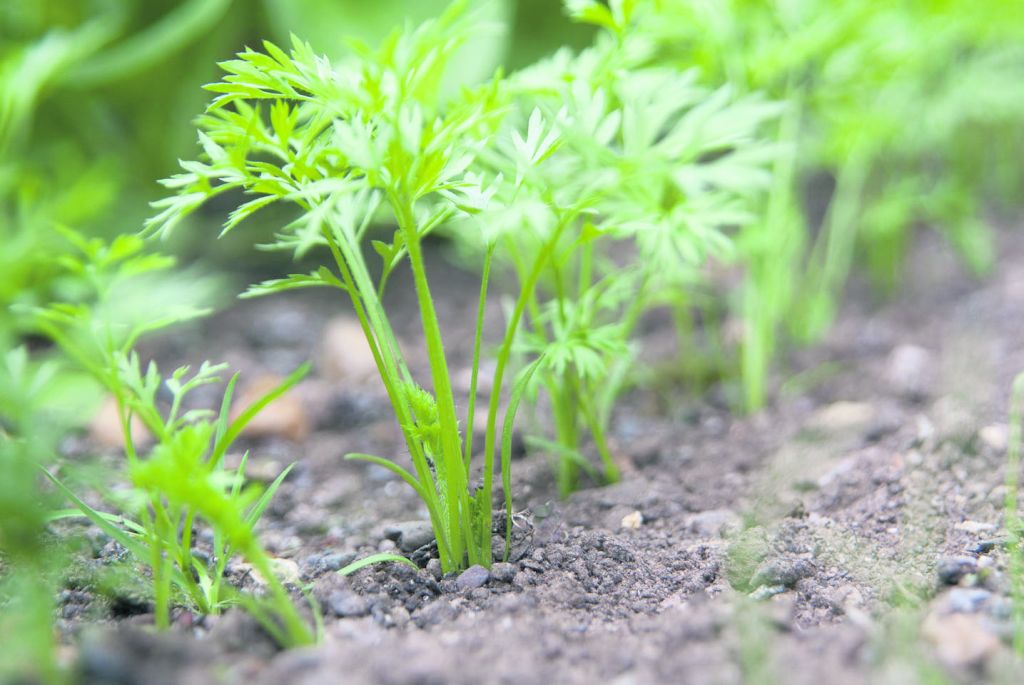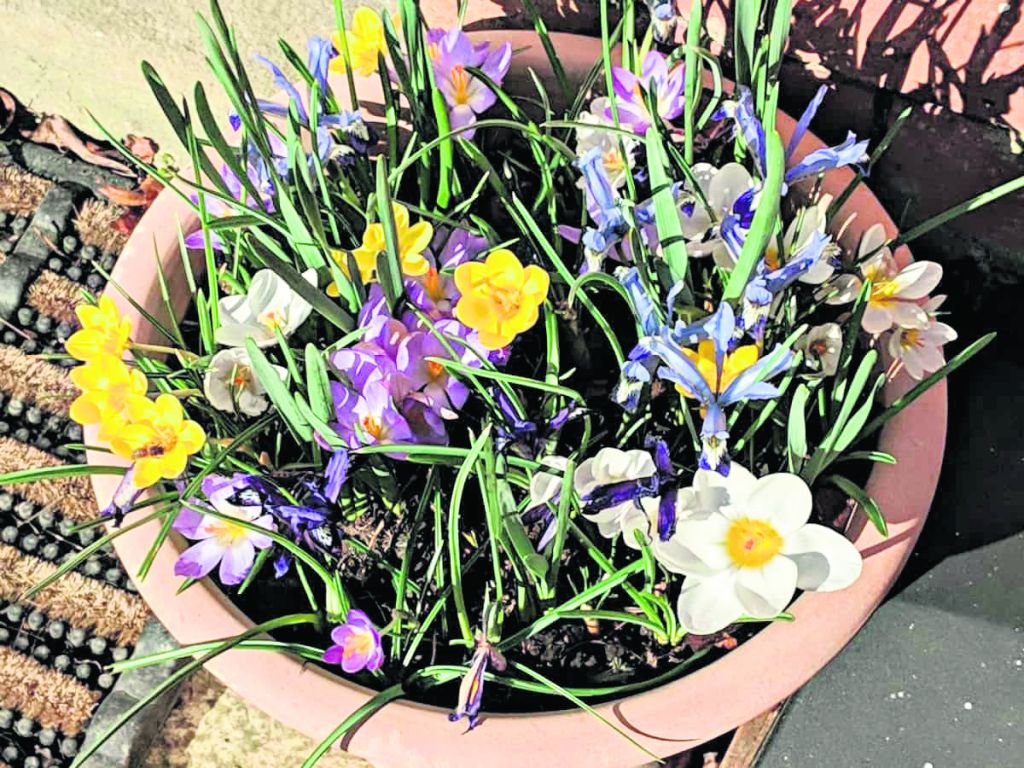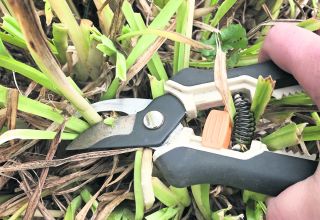September is generally a cooler, gustier month than August and the days are noticeably shorter. If you have a fruit or vegetable patch, you’ll be busy reaping the rewards of harvest. It’s also time to get out and start planting spring-flowering bulbs for next year and you can collect seeds for next summer’s colour too. Make the most of the remaining warmth while you can!
1. The perfect time for planting spring bulbs
September is the perfect time to be planting hardy spring-flowering daffodil, hyacinths and crocus bulbs. These will all do best in a warm, sunny spot and they all love good drainage.
If you’re planting them in a bed or border, dig a hole about four times the depth of the bulb. Put a layer of sand and grit in the bottom of the hole to aid drainage.
Cover this with a little compost and then plant the bulbs under about two bulb’s worth of depth of soil. Try bunching six to ten bulbs together in one spot, placed one bulb’s width apart, or line a path with them for an impressive display.

2. Cuttings and more cuttings
Tender perennials fuchsia, petunia, salvia, verbena penstemon and chrysanthemums can all be propagated with cuttings.
This is a brilliant way to grow more plants for nothing. It is very satisfying nursing plants through from tender young shoots to fully-fledged plants for use in your own containers.
You’ll need to find strong, young growth that hasn’t flowered this year. Snip it off using pruning snips at an angle just beneath a leaf joint, leaving a stem of about ten centimietres in length.
Next, strip off the leaves from the lower stem, leaving just one or two pairs towards the top. This will help to prevent the plant from losing too much water via its leaves while it has no roots to take moisture up from the soil.
Dip the end of the cutting in hormone rooting powder and plant in compost mixed with a little horticultural grit for drainage. This will help to prevent the end from rotting and promote good root growth.
Put the plants in a propagator and cover them with a plastic bag to help retain moisture.
Place them somewhere bright and warm, but keep them out of direct sunlight until roots have formed which should take about six to ten weeks.
3. Autumn lawn care
The approaching autumn season is perfect for establishing or growing a new lawn, should you be looking to roll out whole new turf, or top up your existing grass which may have become patchy or thin. With a wide range of seed and feed for your grass you can make sure that your lawn flourishes when next spring comes around, making it soft and vibrant. Lawns can look tired after the summer months and a good energetic raking will loosen and take out worn roots and leave space for younger roots to take over.
To protect your grass, increase the height of your mower blades through the winter months as grass growth speeds begin to slow.
4. Make the most of hydrangeas
Pick hydrangeas before they are damaged by wind and rain. To make them last as long as possible indoors, float the flowers overnight in a bath of cool water. Then arrange them in a vase with only an inch or two of water. As this evaporates, the flower heads will dry and keep their colour. If you want them to retain their texture but not their colour, add a drop of glycerine to the water too.

5. Deadhead your dahlias
Cut all the spent dahlia flowers off to the buds below them. With a little tender love and care, they’ll keep flowering until the first hard frost. Pick a few pristine heads as you go and arrange in small glasses or bottles on the dining table. While you’re at it, deadhead all your tender perennials – pelargoniums, arctotis, argyranthemums and trailing verbenas. This will give them a new spurt of life. Combine this with a feed of liquid seaweed or general fertiliser for an extra tonic.

6. Time to add green manure
When you think you’ve harvested your last potatoes, carefully dig over the vegetable bed, collect those that were still lurking under the surface, and then dig over, ready to plant some green manures. These green manures are useful in many ways; they protect the soil from erosion over winter, reducing the potential of any leaching of mineral and nutrients, and also protect soil structure, as well as boosting nutrients when dug into the soil. They also provide a green carpet that helps provide shelter for beneficial insects through the winter, such as ground beetle, and if you leave a patch to flower they are loved by pollinators – Phacelia tanacetifolia for example, is one of the best nectar sources for the honeybee, bumble bee and hoverfly.
7. Keep squashes growing for a few more weeks
Keep watering winter squash and pumpkins if the weather is hot. This will prevent their growth from being checked. Use stored rainwater wherever possible. Keep pinching out the tips of triffid-like pumpkins and squash. They prioritise vegetative growth over fruit formation, and you may get fruit drop if you don’t keep them contained. With the tips pinched, all the fruit down to the base of the stem will now be ripening well. Place a tile under the largest fruit to stop rot creeping in where they sit on the damp soil. Leave pumpkins, squash and marrows to ripen in the sun as long as possible so that the skin can harden.

8. In the kitchen garden
- Tidy gooseberries and blackberries. Cut off shoot tips infected with mildew and cut canes that fruited this year to the ground. Tie in the strongest new shoots to canes or supporting wires.
- Plant strawberries in weed-free soil that has been given a boost by digging in some well rotted farmyard manure.
- Save the last of your tomatoes from frost – cut off entire bunches of fruit waiting to ripen and place out of direct sunlight indoors. In a week or so they should turn red.
- Plant out spring cabbages 15cm apart in rows 30cm apart. Cover with fine mesh or fleece to prevent birds from eating the leaves.
- Sow early carrots such as ‘Amsterdam Forcing’ and ‘Early Nantes 2’ in the ground and cover with a cloche for an early crop next year. Alternatively grow in pots placed in the greenhouse.

9. Bulb ‘lasagne’ on the menu?
Plant a layered pot of bulbs, known as a bulb ‘lasagne’ for your doorstep, with the largest and latest flowering bulbs at the lowest level with at least six inches of soil or compost below the bottom of the bulb and early flowering, smaller bulbs on top. Excellent combinations are crocus above early tulips for example single varieties such as ‘Prinses Irene’ and ‘Couleur Cardinal’), or an early grape hyacinth (Muscari azurea) on top, with a late tulip (‘White Triumphator’) below. Top-dress with grit to keep the pot looking good through winter.

10. PLUS
Once harvested, it’s time to start thinking about pruning back your fruit trees and shrubs to maximise yields next year. As a general rule of thumb the sooner this is done after harvesting the better.
Prevent the foliage of apple and pear trees from being defoliated by winter moth caterpillars by wrapping sticky bands around the trunk to prevent female moths from crawling into the branches to lay its eggs.
If you are not sure when your apples are ripe, gently lift them in the palm of your hand or give them a gentle pull – they should come away easily from the branch without needing to be pulled hard.
Birds, who have been pretty sedentary during the summer, will now start to turn back to the bird tables and feeders in order to stock up for the approaching colder months, so start to top up any food for them regularly. Before you do, give everything a good clean – many birds die each year from parasites and toxic bacteria that can build up in feeders and water containers if not regularly cleaned.












